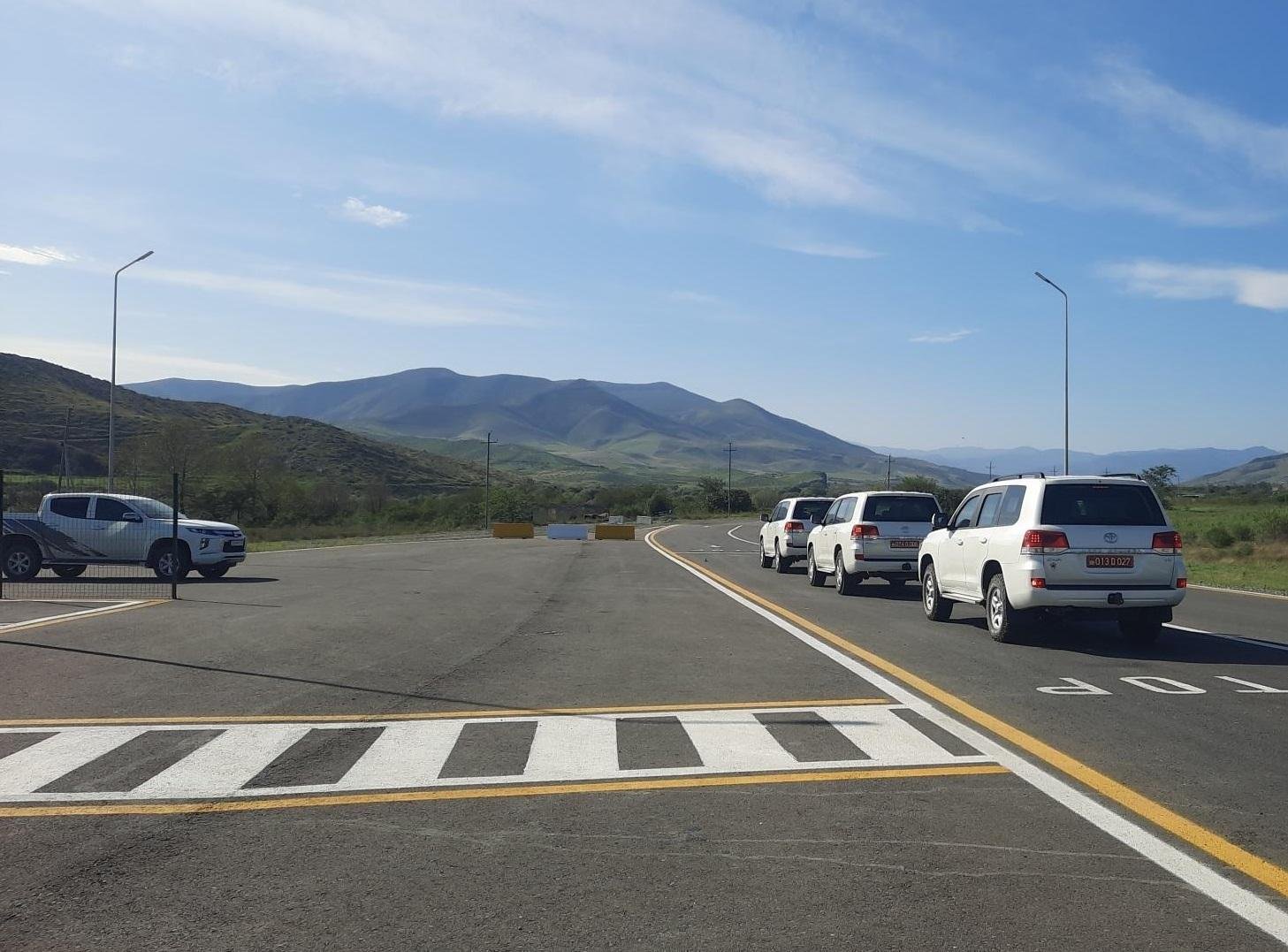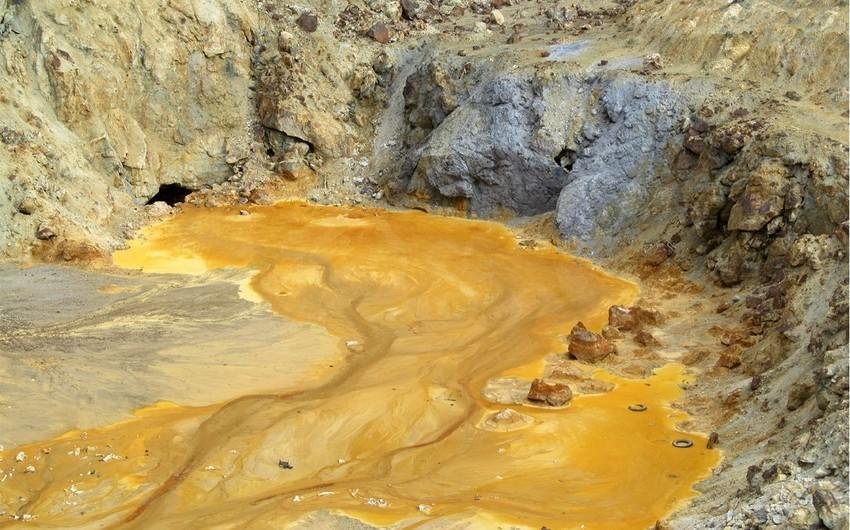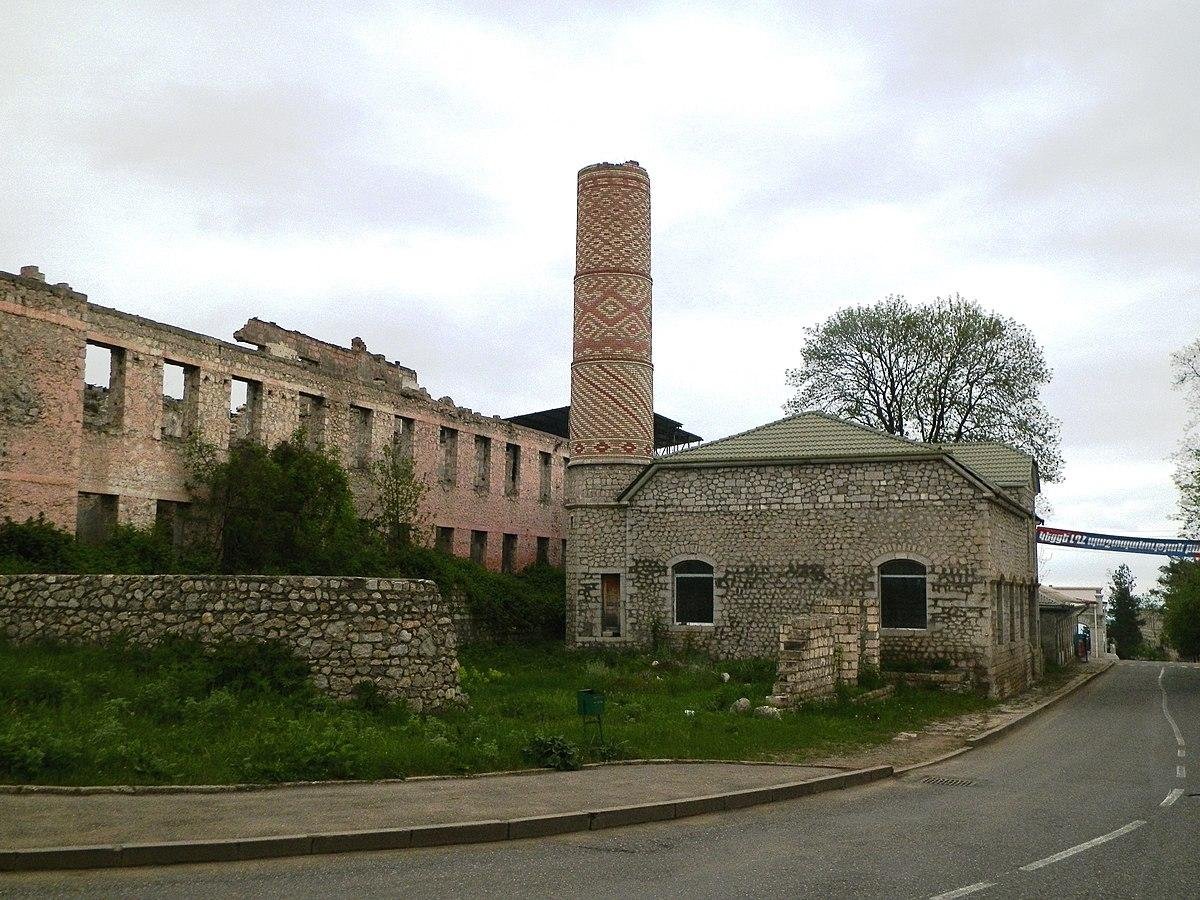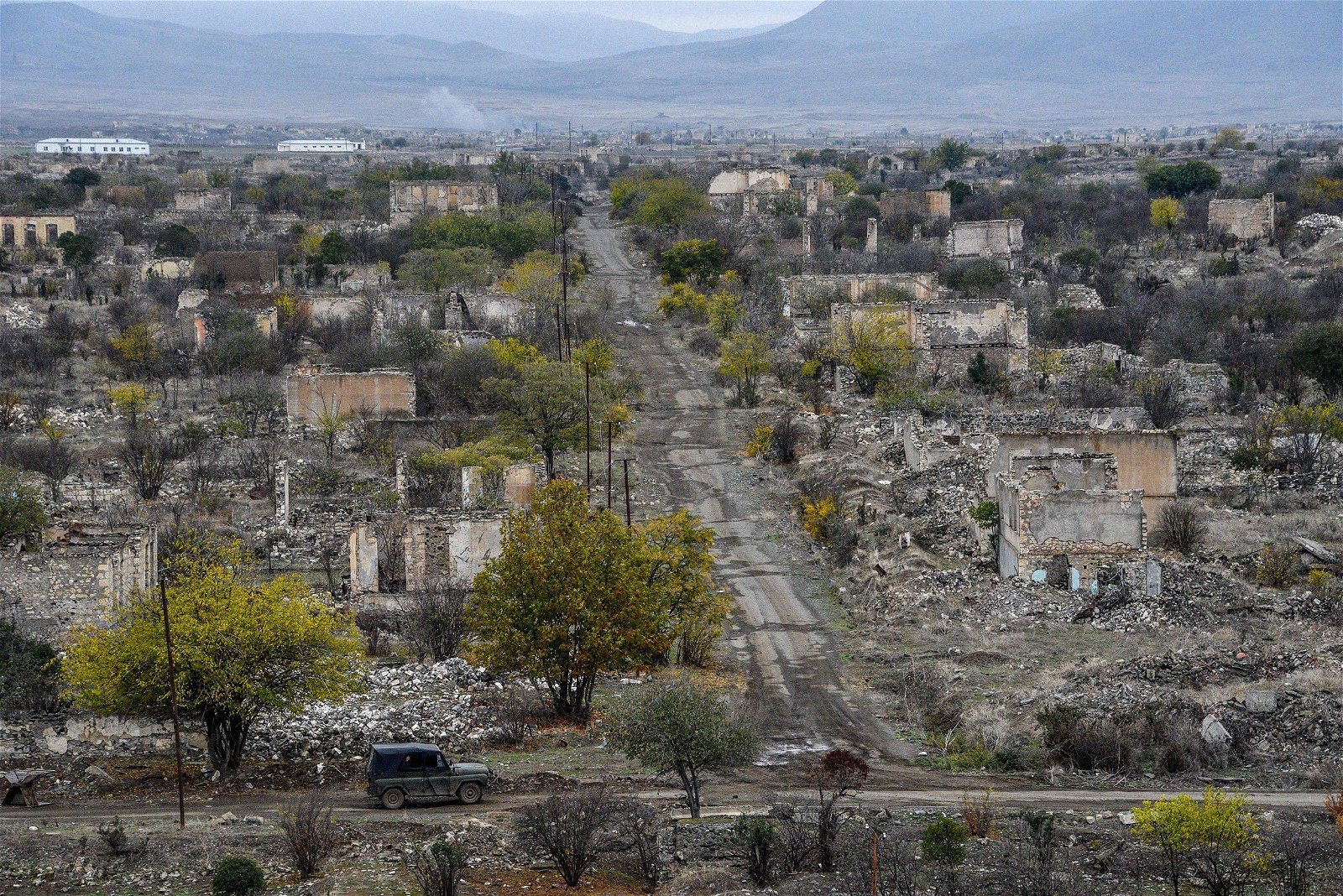UN mission to Karabakh: next manifestation of bias? Azerbaijan is ready for impartial cooperation
Representatives of Armenia urged the United Nation’s top court in a court session on October 12 to impose new orders on Azerbaijan for what they called an “ethnic cleansing” of the Armenian residents of the Azerbaijani Karabakh region.
Accusations and allegations against Azerbaijan largely focused on “ethnic cleansing” claims emanating from Azerbaijan’s recent restoration of its sovereignty over its entire territory and the ensuing voluntary relocation of the Armenian minority from the region.
Yerevan and its trumpeters collectively allege that the displacement of Karabakh’s population of Armenian origin is the result of Azerbaijan’s deliberate actions based on ethnic hatred. However, the relocating Armenians admit that they exercise their rights to make free individual choices, i.e. to leave Karabakh. But the authorities of Armenia, ignoring the first-source information from the resettling Armenians, are convinced that the real situation in Karabakh needs international evaluation by the UN. The idea is likely to get support from the UN relevant authorities.
Seemingly, the white-collar gentlemen sent by the Pashinyan administration to the International Court of Justice public hearings are not following the news. If they did, they should have known that a UN mission had already been to Karabakh twice on October 1 and 9.

A UN mission leads from Aghdam to Khankendi, Karabakh, October 9, 2023
The mission, led by UN Resident Coordinator in Azerbaijan Vladanka Andreeva, got a green light from the Azerbaijani government to enter Karabakh. It was their first access to the region after 30 years of inaction. The reasons for the inaction, we will explain in the following paragraphs.
So, the evaluation report submitted by the mission following the first visit on October 1 confirmed that “they saw no damage to civilian public infrastructure, including hospitals, schools and housing, or cultural and religious structures.” The mission also did not observe any destruction of agricultural infrastructure.
“The mission did not come across any reports – neither from the local population interviewed nor from the interlocutors – of incidences of violence against civilians following the latest ceasefire,” the UN said in a statement, referring to the end of the one-day anti-terror operation in the Karabakh region on September 20.
Before the arrival of the UN mission in Karabakh, reporters of the influential international media organisations spoke with the region’s emigrating Armenian minority. A reporter for Al Jazeera, who visited the Khankendi, Karabakh, said the people in the city, including the International Committee of the Red Cross (ICRC) workers, stated they have not been forced out of their houses and have not faced any human rights abuses by the Azerbaijani side.
Evaluations by the UN mission capped the confessions of the relocating Armenians, thus fetching reasonable arguments to counter Yerevan’s “ethnic cleansing” accusations. The on-ground monitoring of the UN testifies to Baku’s intention to work on an ad-hoc basis with the local office of the UN. The government of Azerbaijan welcomes further assessments by the UN mission and is ready to render all kinds of due assistance.
UN’s inaction over Karabakh
Let’s detail the specific aspects of the years-long standstill in the UN’s response to check the situation in Karabakh. Over 700,000 Azerbaijani residents of Karabakh were forcibly expelled and 30,000 killed by Armenia during the 1991-1994 war.
The ethnic cleansing followed the eradication of their cultural and religious heritage. Moreover, Armenians resorted to massive ecological terror in the occupied lands by exploiting mineral resources, polluting water resources, deforesting the woodlands and more.
The world’s second-largest sycamore forest in the Zangilan district suffered seriously from deliberate deforestation and arson. Five gold deposits and other natural resources of Azerbaijan in the once-occupied territories have been intensively looted by the local Armenian companies and those invited from overseas.
The contamination of the Okhchu River, one of the eleven rivers of Azerbaijan in the Karabakh region, which is home to more than 30 per cent of the country’s overall drinking water reserves, has also been a great concern for the Azerbaijani authorities over the years.

Polluted Okhchu River
According to the preliminary estimates, the amount of material damage caused by Armenians to Azerbaijan’s infrastructure, resources, and citizens totals $818 billion. The environmental crimes caused $285 billion in damages.
Cultural vandalism by Armenia was common in the once-occupied Azerbaijani territories and footage depicting mass destruction of the monuments during the years of occupation went viral after the liberation of the territories.
According to data compiled by the Ministry of Culture of Azerbaijan, based on the statistics from the early 1990s, some 2,625 monuments were registered in the occupied territories, of which 706 were protected by the state. Hundreds of cultural institutions, including 927 libraries with 4.6 million books, 808 palaces of culture, clubs, and houses of culture, 85 music and art schools, 22 museums and museum branches with more than 100,000 exhibits, 4 art galleries, 4 theatres, 2 concert halls, 8 cultural and recreation parks have been destroyed and looted.
Affected sites included more than 400 monuments representing the cultural and religious heritage of Azerbaijanis only in Karabakh. Mosques, memorials, museums, statues and more were obliterated.

Saatli Mosque destroyed by Armenians in Shusha, Azerbaijan
The city of Aghdam, where the world’s Bread Museum was located, as well as the city of Fuzuli, was completely razed to the ground, now resembling ghost towns. Aghdam is dubbed "Hiroshima of the 21st Century" and "Hiroshima of the Caucasus" by international journalists, including prominent French photographer Reza Deghati and media outlets.
International analysts also labelled Aghdam as the largest “home depot on the planet” as Armenians plundered and ransacked the district’s properties to use as building supplies. The city has also suffered a “mine terror” by the Armenian forces.
The UN did not take heed of Azerbaijan’s numerous requests for conducting a monitoring of mass destructions and vandalism in the occupied Azerbaijani lands. Baku, concerned over Armenia’s violation of all norms and principles of international law (the 4 UN Security Council Resolutions, PACE, Geneva Convention), appealed to the UN General Assembly about the conditions in its occupied territories with no positive response.
UN’s post-liberation hesitation
Before and after the liberation of its lands in 2020, the government of Azerbaijan called UNESCO, the cultural main body of the UN, to send an urgent technical mission to the liberated territories to assess the consequences of the Armenian atrocities.
"It has to be regretfully noted that during the 30 years of Armenia's military aggression against Azerbaijan and the occupation of our lands, our appeals to UNESCO to investigate war crimes such as the deliberate destruction, misappropriation, alteration of our cultural heritage, as well as illicit removal of our cultural properties by Armenia have been ignored and the UNESCO Secretariat has not demonstrated determination in this regard," the Foreign Ministry of Azerbaijan said in a statement in 2020.
Results of the Azerbaijani culture ministry's preliminary monitoring of the cultural heritage in the liberated lands have been submitted to UNESCO, including the photos of the destruction and desecration of Azerbaijan's cultural assets by Armenia.

The ruins of the Aghdam city after Armenian occupation
At the 77th session of the UN General Assembly in New York in September 2022, Azerbaijan’s Foreign Minister Jeyhun Bayramov publicly urged UNESCO to send a mission to the liberated lands. While UNESCO remained silent to Azerbaijan’s calls, their colleagues from the Islamic World Educational, Scientific and Cultural Organization (ISESCO) sent a technical mission to Azerbaijan in early 2022 to undertake a post-conflict State of Conservation Assessment of the Cultural Heritage in the liberated territories.
UNESCO’s intention of sending a mission to Karabakh surfaced following the alleged reports about the destruction of the Armenian heritage in the Azerbaijani region. The sudden sensitivity unmasked the bias of the world’s major cultural organisations toward Armenia.
In November 2022, the First Vice President and first lady of Azerbaijan, Mehriban Aliyeva, resigned from her role as “goodwill ambassador” to UNESCO. Aliyeva announced in a letter on November 15 that she was busy due to her active involvement in the large-scale restoration and revitalization of the liberated territories of Azerbaijan, including Karabakh, after the victorious war with Armenia in 2020.
In her letter, Aliyeva also expressed her hope for the soonest dispatch of a UNESCO mission to the liberated territories, to assess the damage to the cultural heritage of Azerbaijan as a result of the occupation of Armenia.
Given all the written above, now, if the UN wants to take Armenia’s side in urging a mission to Karabakh, it should also consider the destruction of mosques and other monuments, the damage caused to Azerbaijanis, the problem of one million refugees and internally displaced persons, the problem of mines, the issue of missing persons and the protection of the cultural and historical heritage of Western Azerbaijan (modern-day Armenia). Otherwise, the world’s largest union of nations could continue losing options to save its paling reputation …








